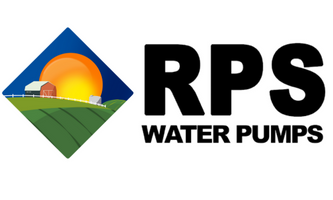

Answering Your Water Pump Questions
with RPS Engineer Mike
Can I replace a well pump myself?
The answer to this question, much like a lot of other questions related to well pumps, depends on the stats of your well, mainly the total depth of the well. The depth of your well will determine what kind of drop pipe you will be able to use. And the type of drop pipe you use will determine how difficult the installation will be.
On a ranking from easiest to most difficult to install yourself…
Poly Pipe (easiest)
PVC
Steel Galvanized Pipe (most difficult)
For wells up to 300-450 feet, you’ll be able to use poly pipe. One thing to keep in mind when choosing a poly pipe to install your well pump, is that the deeper you go, the thicker walled poly pipe you will need to use so it can support the weight at the depth you plan on setting the pump at. You can use 160psi poly pipe for up to 300’ installs, 200psi poly pipe for up to 400’ installs, and 250psi poly pipe for up to 500’ installs.
If your well is deeper than 500’, then you will have to use a rigid pipe such as PVC or galvanized steel, as a flexible poly pipe won’t be able to hold the weight of the pump beyond 500’. You can in some instances, use a flexible poly pipe on a well deeper than 500’, but the weight of all the pipe/wire/plumbing is usually entirely too heavy for even a couple people to do by hand. At that point, well owners make a wheel or spool rig to help gently lower the heavy bundle down the well, or use a truck.
It is possible to install a pump using a rigid pipe by yourself, but it will be much more difficult than it would be if you were able to use a flexible poly pipe. This is because the rigid pipe will come in 10’ or 20’ sections of pipe, and as you lower it down you will need to have something that can hold the weight of the pump and pipe while you attach the next section of pipe. Steel galvanized pipe becomes VERY heavy VERY quickly and is usually only used for wells deeper than 800 feet. A well driller/pump installer will have a piece of equipment that can make this kind of install easy, but if you plan to do it yourself then a flexible poly pipe will make your install process much easier.
Dropping the pump down the well is really the biggest difficulty in installing a well pump, the rest of the process is fairly simple. Poly pipe comes in one big length of pipe. The poly pipe allows you to easily lay out and hook everything up on dry ground. Then once you have tested the pump in a bucket, and ensured the wires and pipe are connected correctly, you can just lower the pump down like it is connected to one big rope. No need for a pump jack to hold the pump and pipe in place while you connect another section of pipe. This also makes it much easier if you ever have to pull the pump out of the well.
You will need to know how to splice a length of wire onto a pigtail that comes off the pump, and attach some basic plumbing fittings together. Even if you don’t know how to splice a wire, our instruction manual is very detailed on how to properly splice a wire. If you follow the instructions it is hard to mess it up. If you are replacing an existing well pump, then most of the harder plumbing (such as plumbing the pump to a pressure tank) should already be done for you. You will just need to hook up the plumbing from the well seal or pitless adapter to the existing plumbing heading to your pressure tank or wherever you are pumping the water to.
One thing to keep in mind when choosing a poly pipe to install your well pump, is that the deeper you go, the thicker walled poly pipe you will need to use so it can support the weight at the depth you plan on setting the pump at. You can use 160psi poly pipe for up to 300’ installs, 200psi poly pipe for up to 400’ installs, and 250psi poly pipe for up to 500’ installs.
Take the Next Step to Water Independence
Learn More About Water Pumps
-
 If you’re considering replacing a well pump and it’s your first time, you may have questions about long it may take. We often say a full install only has to be a couple of hours, but is that actually accurate?Read now
If you’re considering replacing a well pump and it’s your first time, you may have questions about long it may take. We often say a full install only has to be a couple of hours, but is that actually accurate?Read now -

How many GPM is a good well pump?
Water needs can differ significantly depending on circumstances, and you may need a submersible well pump with a significantly higher or lower flow rate, depending on household size, irrigation needs, and sprinkler use.Read now -

Can you put in too big of a pressure tank?
When it comes to sizing a well pressure tank, there really isn’t an upper limit as to how big of a tank you can put in. There are some pros and cons to different size pressure tanks, and they can have an impact on the lifespan of your pump.Read now




